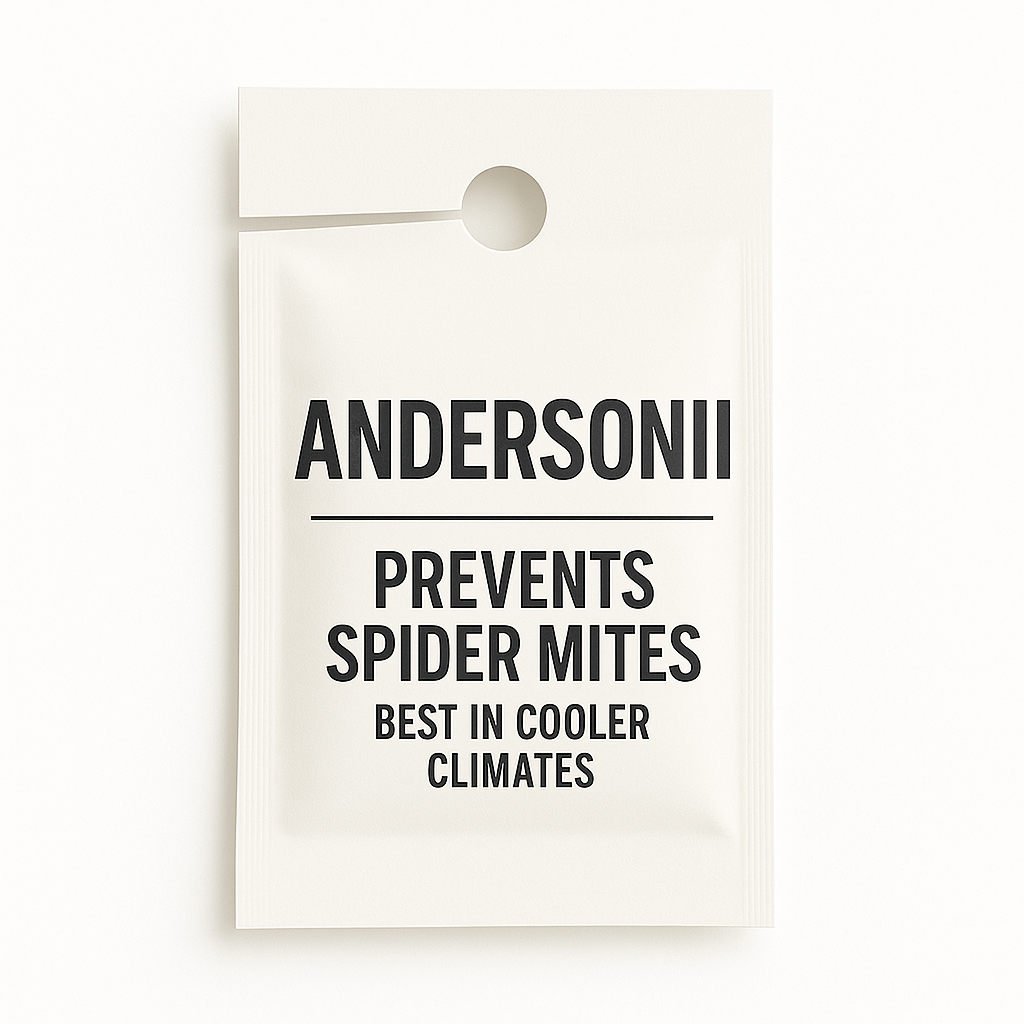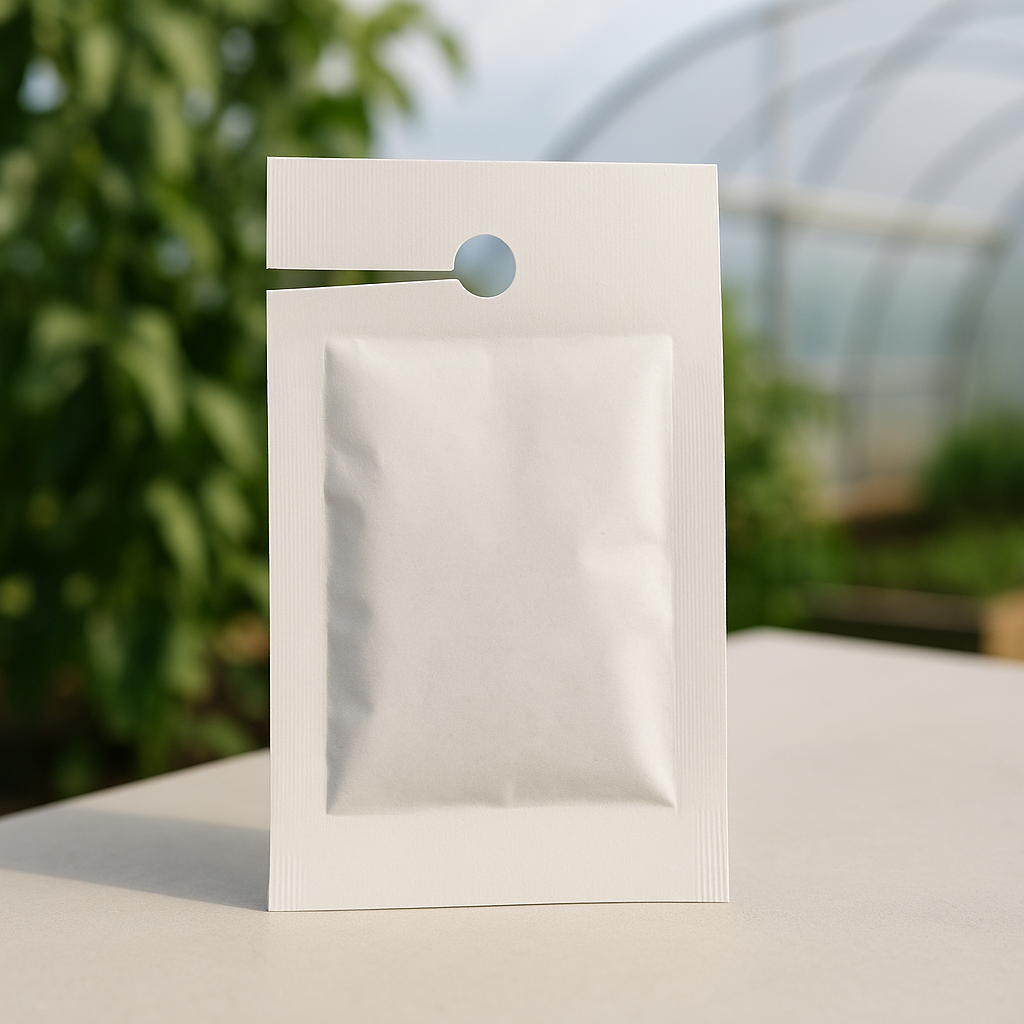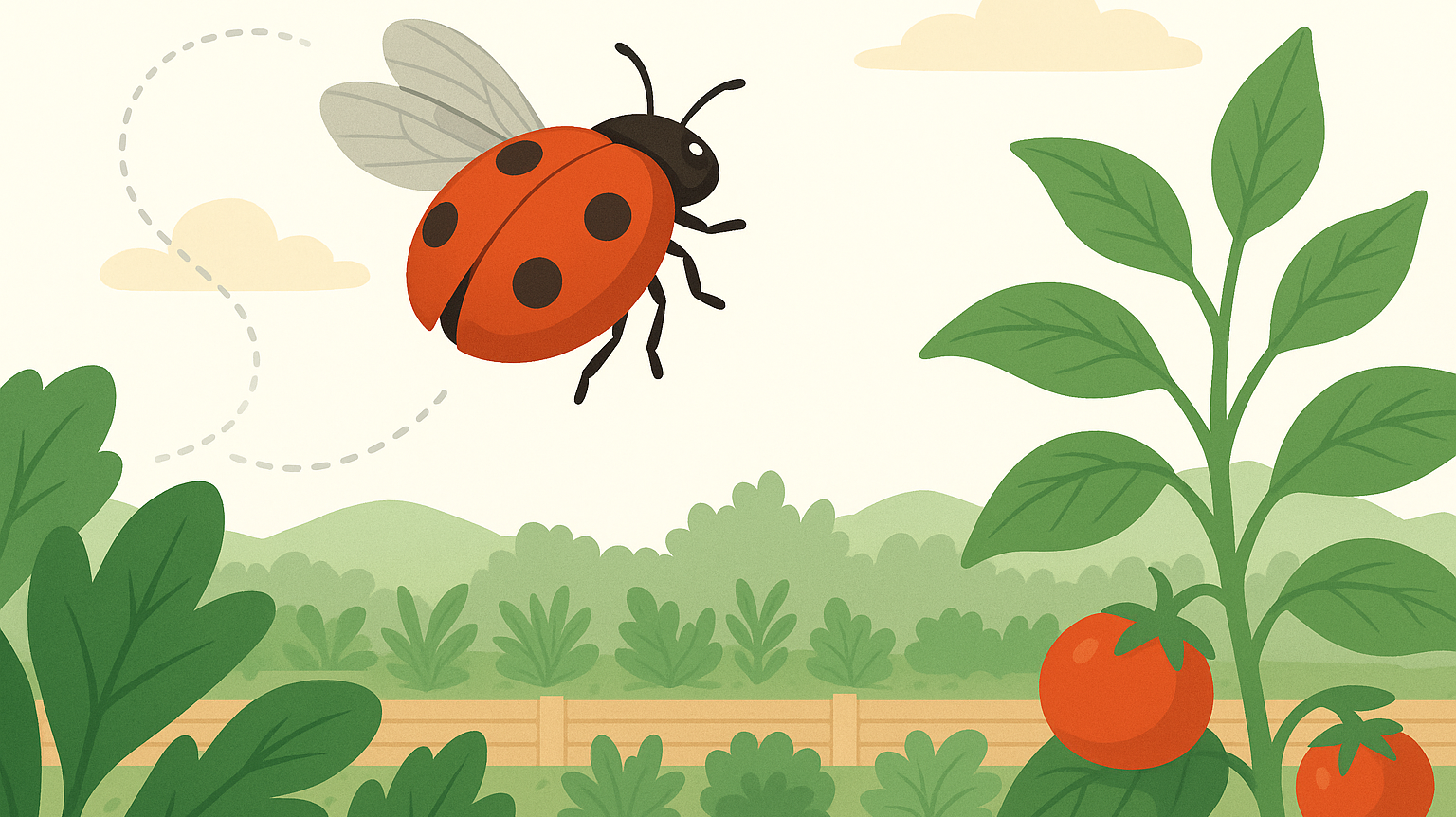Want to Stop Spider Mites and Broad Mites Before They Start?
If you’ve dealt with mites before, you know how this goes: the damage shows up fast, the webbing follows, and suddenly you’re in full-blown rescue mode.
Amblyseius andersoni sachets are how you stay out of that cycle.
These slow-release sachets deliver consistent, preventative coverage against spider mites, broad mites, russet mites, and more—especially in grow environments that won’t commit to one temperature or humidity level.
Amblyseius andersoni Sachets
Preventative Control for Spider Mites, Broad Mites, and Russet Mites
Each sachet releases all life stages—eggs, juveniles, and adults—over 2–4 weeks. That steady release gives you continuous protection before mites have a chance to build momentum.
Unlike more climate-sensitive species like persimilis or swirskii, Andersoni thrives in the real world—where tents run hot one day and cold the next, and humidity doesn’t always behave.
What It Prevents
| Mite Type | Early Signs You’ll Avoid |
|---|---|
| Spider mites | Fine webbing, stippling, leaf speckling |
| Broad mites | Twisted or hardened new growth |
| Russet mites | Bronze, rough-textured leaves |
| Cyclamen mites | Deformed growth at crown or leaf center |
| Eriophyid mites | Unexplained blistering or leaf curl |
Andersoni is one of the few predators that targets all of the above—making it your best option for broad-spectrum prevention across mite types.
Why These Sachets Work for Prevention
| Feature | Why It Matters |
|---|---|
| Slow, even release | Mites exit over time to maintain ongoing pressure |
| All life stages inside | Eggs, nymphs, and adults—ready at every phase |
| Built for variable conditions | Functions in 42–100°F and 40–90% humidity |
| Targets multiple mite species | Works even when you don’t know exactly what’s coming |
| Low effort, long coverage | Hang and walk away. No mess, no re-entry delay, no spraying |
This is your set-it-and-forget-it solution to prevent spider mites and broad mites from setting up shop.
Best For
-
Greenhouses, tents, and grow rooms with inconsistent environments
-
Preventing flare-ups after spider mite or broad mite treatment
-
Living soil or organic setups where sprays aren’t an option
-
Early-season deployment to stay ahead of known pest cycles
-
Multi-species pressure when you can’t ID what’s hatching
How to Use
| Setup | Recommended Rate |
|---|---|
| Individual plants | 1 sachet per plant |
| Dense canopy or rows | 1 sachet every 3 feet |
| Reapply | Every 2–4 weeks depending on pressure and season |
-
Hang sachets on stems, stakes, or trellises
-
Keep sachets dry—avoid misting or irrigation contact
-
Mites exit through the vent gradually—do not open
Pro Tips
-
Start before pest populations spike—this is a shield, not a rescue
-
Combine with Swirskii or Californicus for broader coverage
-
Use after bottles to prevent pest rebound
-
Skip the sprays—residue kills predators
-
Replace every 2–4 weeks during active seasons or in high-risk setups
Safe for Everything but the Mites
-
Safe for use around pollinators, pets, and people
-
Compatible with organic, no-till, and living soil systems
-
No re-entry interval
-
No odor, no residue, no stress on sensitive plants
Shipping & Storage
-
Ships with live delivery guarantee
-
Use immediately on arrival
-
If delayed, store for up to 48 hours at 45–55°F
-
Do not freeze or store in low-humidity environments
FAQ
How does the Live Guarantee work?
We know how important it is for your mites to arrive healthy and ready to work. That’s why we offer a live arrival guarantee—with flexible options depending on when we hear from you:
- Let us know within 24 hours of delivery: We’ll gladly send a free replacement shipment.
- Let us know within 2–3 days of delivery: We can offer store credit to make things right.
- After 3 days from delivery: Because these are living organisms, we’re not able to offer replacements or credit beyond that window. By then, it’s harder to know what went wrong or whether shipping conditions were a factor.
We truly want your mites to succeed—so please open your package as soon as it arrives and check on them. If something doesn’t look right, don’t wait—reach out and we’ll take care of you.
Where are you located?
We have a number of different locations in NJ, Maine and Oregon. While we'd love to have you, we are not currently open to the public.
Can I call you?
We get it. Sometimes it's easier to talk to someone, and on a case by case basis we can try to figure it out. Unfortunately though, we're really not able to take calls—FGMN is a small nursery, and we're usually elbows-deep in plants or packing boxes. To make sure nothing gets missed (and everyone gets a timely reply), we keep all communication in writing.
Feel free to message us at info@fgmnnursery.com. We mostly respond quickly, but every once in awhile replies may take a day. Do follow-up if you don't hear in that time. We're human, we miss an email here or there.
Too Many Options?
We get it. Try our mite/insect matchmaking quiz and instantly get matched to the solutions you may need.
Our Live Delivery Guarantee
We stand behind every leaf and every mite. If your plant or predatory insects don’t arrive alive on the first delivery attempt, we’ll make it right.
Here’s what you need to know:
- Email us at info@fgmnnursery.com within 24 hours of delivery
- Include clear photos of the item and the shipping label
- Someone must be available to receive the package—plants and bugs don’t do well sitting in the sun, a mailbox, or the back of a delivery truck
For plants, we offer store credit if something goes wrong.
For predatory mites and beneficial insects, you’ll have the choice of a replacement shipment or store credit.
If you contact us after the 24-hour window, we may still be able to help—just know it’s handled case by case.
We pack with care, insulate when needed, and check the weather before shipping. But once it’s in transit, the fastest way to protect your order is to open it right away.
Mite Matters
The Hidden Weather That Shapes Plant and Predator Life
Invisible weather shapes every growing space. Warm air pools under lights, cool air settles near the floor, and in between, tiny predators decide where they’ll thrive. Learn how microclimates influence the balance between plants, pests, and the mites that keep them in check.
If Ladybugs Are Just Going to Fly Away, Why Use Them?
Most ladybugs don’t fly off out of spite — they leave when the environment isn’t right. Learn how temperature, humidity, and shelter affect whether they settle or scatter, and how to create the ideal setup that keeps them working where you need them most.
Where Did My Predatory Mites Go?
Released predatory mites but can’t see them anymore? Don’t panic. Their invisibility is exactly what makes them effective. Learn why they vanish, how they hunt pests out of sight, and why reapplying keeps your plants protected.







